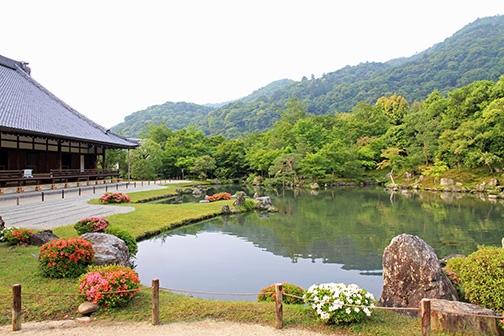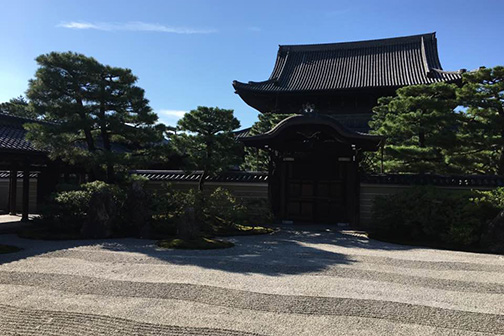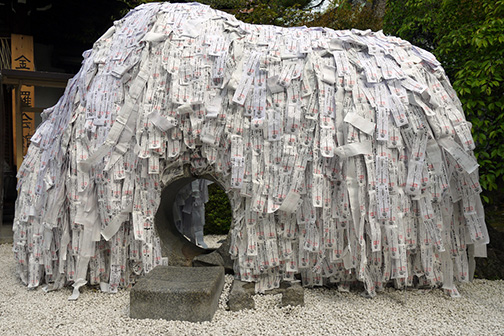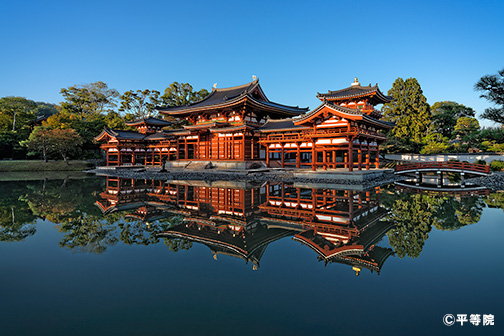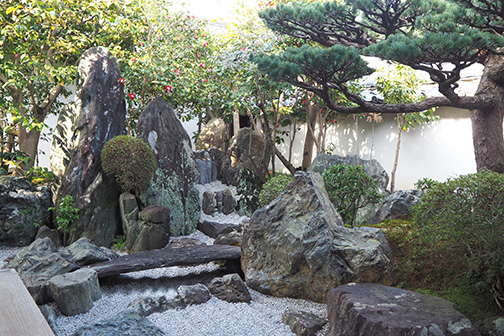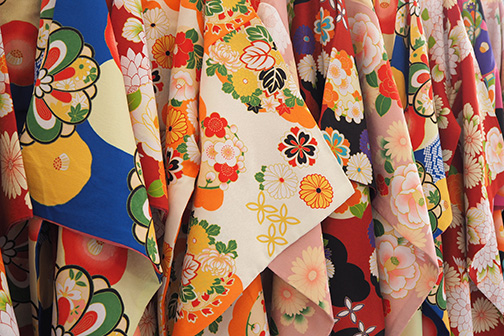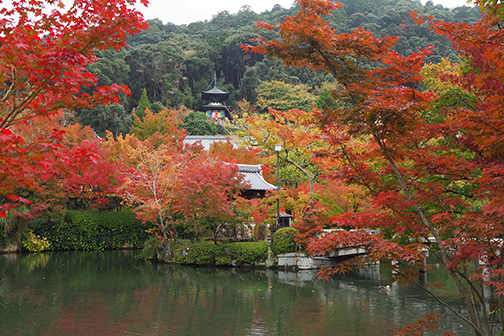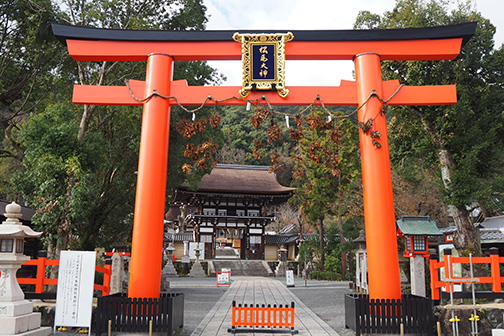
Timeless Kyoto
Explore Kyoto: Tours and Itineraries
桜 -Sakura (cherry blossoms)-
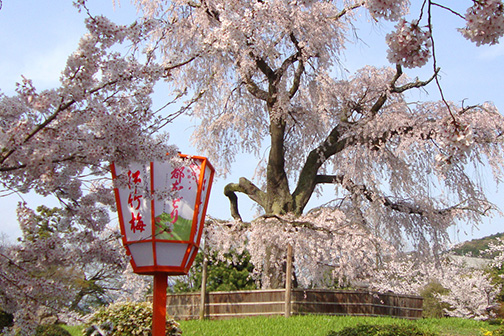 Maruyama Park
Maruyama Park Raden Workshop
Raden Workshop Daigo-ji Temple
Daigo-ji Temple Yamashina Sosui (Canal)
Yamashina Sosui (Canal)Kyoto
Maruyama Park
Maruyama Park is a famous scenic spot. It is one of the oldest parks in Kyoto and used to be part of Chion-in Temple and Yasaka Shrine. The park was damaged in a fire, after which a Japanese garden was designed and built in 1912. There are about 680 cherry trees in several varieties in the park, the centerpiece of which is a giant weeping cherry tree. Locals and tourists alike enjoy the blooming cherry trees in spring.
Raden (inlaid mother-of-pearl lacquerware) workshop
Raden is the technique of cutting the nacreous iridescentlayers on the inside of shells into flat pieces, and then inlaying these piecesinto lacquerware and woodwork, and the style of arts and crafts made using thistechnique. Among the decorative lacquerware techniques, raden isconsidered the most elegant. In this plan, you will make apiece of Kyoto-style inlaid mother-of-pearl lacquerware using the samematerials and tools that traditional master craftsmen use. You can take your craftwork home with you and use it after your trip.
Daigo-ji Temple
Daigo-ji Temple is a famous spot for cherry blossom viewing, so much so that it has been known as “Flowering Daigo” since the Heian Period (794–1185). Beginning with the early-blooming higan-zakura, the different varieties of cherry trees come into bloom one after the other. There are about 1,000 trees all together.
Yamashina Sosui (Canal)
Yamashina Sosui (Canal) transports water from Lake Biwa. There are 660 cherry trees planted along the walking path by the banks of the canal, which become a sea of cherry blossoms in spring. Vivid yellow field mustard flowers along the canal also add a bright pop of color.
Shorenin Light-up (Special Night Visit)
Shorenin Temple holds special night visits every year when the cherry trees are in bloom. Visitors can experience the magic of seeing the beautiful cherry trees lit up at night. This temple has a close relationship with the Japanese Imperial Family dating back to the temple's founding in the 12th century.
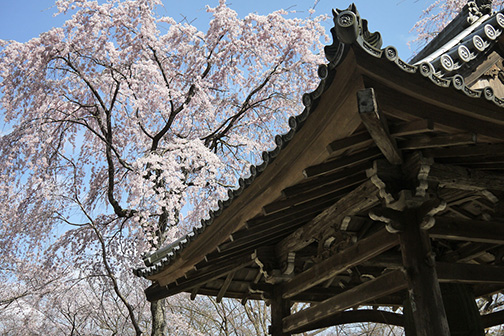 Shoji-ji Temple
Shoji-ji Temple Kyo-kumihimo Workshop
Kyo-kumihimo Workshop Ninna-ji Temple
Ninna-ji Temple Hirano Shrine
Hirano ShrineKyoto
Shoji-ji Temple
Shoji-ji Temple is a Tendai sect temple located in the western part of Kyoto city. There are approximately 100 cherry trees planted on the temple grounds, which is how the temple came to be known as the "temple of flowers." The ancient cherry tree beside the Shoro (bell tower) is named Saigyo zakura after the poet Saigyo Hoshi, who became a Buddhist priest at this temple and is believed to have planted the tree.
Kyo-kumihimo (traditional Kyoto-style braiding) workshop
Kyo-kumihimo has been practiced for more than a thousand years and applied to a variety of decorations including for shrines and temples, clothing, and personal armor such as sword straps. Today you will make an original bracelet or strap using this braiding technique.
Japanese lunch at Shinsenen Garden
Shinsenen Garden is a garden constructed to the south of Nijo Castle and what remains of Emperor Kammu's original palace and pleasure garden built from 794, when the capital was moved to Kyoto. The garden gets its name from its pure spring water.
Ninna-ji Temple
One feature of Ninna-ji Temple is Omuro cherry trees, which are short (about 2 meters high) and late blooming. This makes Ninna-ji Temple the perfect Kyoto destination at the end of the cherry blossom season. Because the trees are short, you can see the blossoms up close.
Hirano Shrine Sakura Light-up (Special Night Visit)
One of Kyoto's most famous hanami (cherry blossom viewing) spots is Hirano Shrine, which is known for the many varieties of cherry trees found on its grounds. The trees are lit up in the evening for a special treat.
 Kurama-dera Temple
Kurama-dera Temple Aizome (indigo dyeing) Workshop
Aizome (indigo dyeing) Workshop Tetsugaku-no-Michi
Tetsugaku-no-Michi Nakaragi-no-Michi Path
Nakaragi-no-Michi PathKyoto
Kurama-dera Temple
The temple was built by the venerable monk Gantei Shonin in response to a revelation of a deity. It is also known as the temple where the great military commander Minamoto Yoshitsune spent his childhood and is the setting for Kurama Tengu, a Noh play focused on Yoshitsune. This temple is also a perfect spot to admire the cherry blossoms.
Aizome (indigo dyeing) workshop
Japanese aizome (indigo dyeing) is characterized by its deep blue color that is also called "Japan blue." Try finding your favorite aizome items or experience it yourself and discover the charm of the mystical Japan blue!
Tetsugaku-no-Michi: The Path of Philosophy
The Path of Philosophy is a gorgeous place for a stroll when the cherry trees are in full bloom. Countless pink blossoms hang down over the narrow, cobblestone path that hugs a tranquil canal.
Nakaragi-no-Michi path
Nakaragi-no-Michi is an 800-meter long passageway along the Kamo River on the west side of Kyoto Botanic Garden. The passageway becomes a tunnel of beautiful deep-pink weeping cherry trees in spring.
Kyoto Botanical Garden Sakura Light-up (Special Night Visit)
Founded in 1924, Kyoto Botanical Garden is the oldest and most comprehensive public botanical garden in Japan. More than 500 cherry blossom trees bloom in the park and create a magnificent sight when lit up at night. Hana-toro (lanterns decorated with paper flowers) are set up along the passageways in the garden, and visitors can enjoy the beauty of cherry blossoms in the dim light of the spring night.
 Sewari-tei Levee
Sewari-tei Levee Kyo-Yuzen Workshop
Kyo-Yuzen Workshop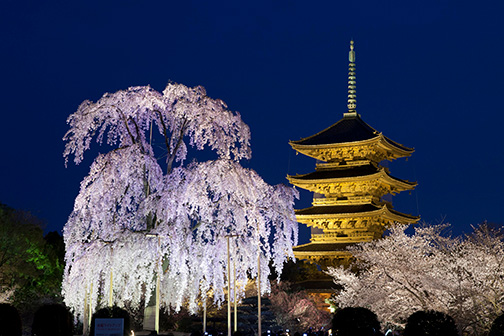 To-ji Temple
To-ji TempleKyoto & Yawata City (Kyoto Prefecture)
Iwashimizu Hachimangu Shrine
Enjoy the cherry blossom trees all over Mt. Otokoyama, including at Iwashimizu Hachimangu Shrine. As you ride the Otokoyama Cable Car, you can gaze at the 200 cherry blossom trees, primarily yama-zakura (Japanese cherry) as well as such varieties as Yoshino and yaezakura. The shrine is particularly well known for its weeping Prunes pendulum cherry trees in its garden.
Sewari-tei Levee
Some 250 Yoshino cherry trees bloom with magnificent beauty for 1.4 kilometers along the levee between the Uji and Kizu rivers, making the levee a perfect spot to enjoy a picnic lunch.
Chopsticks Making & Kyo-Yuzen Chopsticks Case Dyeing Workshop
Kyo-Yuzen, a technique of painting dye directly onto cloth, was invented in the middle of the Edo Period towards the end of the 17th century. It has since become the ultimate art of kimono dyeing, famous for its use of distinctive and vivid colors seen nowhere else in the world. Dye a beautiful case for your hand-made chopsticks to enjoy long after your trip!
To-ji Temple Sakura Light-up (Special Night Visit)
The light-up is an amazing event to celebrate the blooming cherry trees at the 1,200-year old temple that is a UNESCO World Heritage site.
 Mt. Yoshino
Mt. Yoshino Mt. Yoshino
Mt. YoshinoMt. Yoshino (Nara Prefecture)
Mt. Yoshino Sakura Tour
Mt. Yoshino in Nara Prefecture is undoubtedly Japan's oldest and most famous cherry blossom viewing spot. Over 30,000 cherry trees of different types bloom along the mountain's elegant slopes and attract thousands of viewers every spring. Gaze at the mountain covered in a sea of delicate pink while enjoying a picnic lunch.

